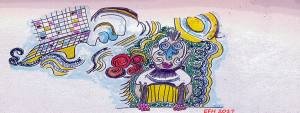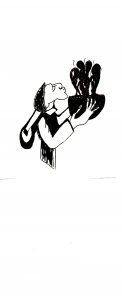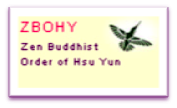Most members of our Hsu Yun Order practice in a private setting, a small local sangha around an ordained priest. That is our Way. It means that we root our daily liturgy and practice in our own local context.
Our Zen groups/hermitages aren’t temples and that means that it is only a place where a priest shares his or her humble daily practice.
On most occasions our chanting practice consists of the same daily liturgy. We might adapt it to special times of the year….adding a hymn to a bodhisattva, a passage of a sutra or a Zen master chant when needed which means that our humble liturgy comes from the common core of Zen liturgy.
It is important to note that our liturgy adapts and functions according to the practice needs.
There are elaborate liturgies for special ceremonies and rituals in our tradition, but I’ve seen priests try to perform a special ceremony when they were not comfortable with it or didn’t know enough. When this happens the original intent and function of the specific liturgy is hollow and full of the priest’s ego resulting in awkward worship.
Embracing our simple daily liturgy helps us keep their original intent of forgetting and transcending the ‘I, me, or mine’ in the process.
If something fancier, bigger, is wanted it may be better to attend a local temple. Traditional Chinese liturgy is wonderful but the daily version is may be too esoteric in nature for the daily liturgy. They are wonderful practices which I love to study with my students using the excellenttranslation of Ryugen Fischer (Shi Shen Long) a dharma grand, grandfather of mine in my Soto Zen Lineage. But our founders advised us to use simple liturgies helping us to stay close to the basics of Mahayana Zen Buddhism. And staying close to simple things such as taking refuge, confession, taking vows, and the chanting the heart sutra is certainly something that most of us need more than the esoteric mantras as a daily practice.
A good example of such a simple and direct liturgy can be found in D.T. Suzuki’s widely known and freely available “Manual of Zen Buddhism.”
Our dear MingZhen Shakya liked that version, and it is one of the first books she pointed to me (with the basic book of our tradition “Empty Cloud”and her wonderful intermediate level Zen manual “The Seventh world of Chan”).
One has to understand that our Order is composed of Zen groups/hermitages centered on the shared daily practice of liturgy and meditation. It’s the shared daily practice of a Zen priest, nothing more, nothing less. That is what we practice, share and transmit. Nothing fancy, but complete in its own way but it helps the practitioner cultivate simplicity, humility and sincerity.
We make an effort to stay rooted in the common heart of our Sino-american Zen tradition which comes from our Zen Order’s unique history and legacy that allows us to embrace with a more open and warm regard other Zen traditions and their own unique history and legacy.

That being said, keep in mind that common rituals and ways are essential to every Zen group but don’t be afraid to adapt and simplify them to your own setting and life. Adaptability is part of the job of a Zen priest.
Chants, instruments and all the rest are wonderful tools, so use them with simplicity and sincerity. In this spirit, we use whatever is needed for the Dharma to be alive and nothing more!
Some good advice from an old zen teacher of mine is that what monks need for their practice should fit in a monk’s bag. Whats in there you might ask? Some sort of buddhist robe (kasa, rakasa, wakasa), a liturgy or Zen book of some sort, clappers and a hand bell, incense and maybe a wooden fish drum for the more elaborate practice. This is certainly all that is necessary. If you practice alone, do some sort of pilgrimage or lead a small Zen group/hermitage this is really the essential toolbox you should use and master.
About the use of instruments, i would recommend to keep things simple, be sincere and master the little things you do and share. Use mostly
wood instruments when chanting or calling to chant or meditation practice, don’t turn it into a music concert. Use the bell mostly as a call to true inner attention (beginnings of sitting or walking periods is a good example). When using the bell, forget about “you” and remember that the sound of the bell is the true sound of KuanYin/Kannon’s voice manifesting here and now! There is no place for “you” in Pure Attention!
Priests are not actors or performers doing a show. When a priest chants it is another way of giving all our selves to action, pure and free action.
So please remember, as our dear MingZhen Shakya used to say, Zen is Action! Liturgy!
The simple way is our Way.
May every being humbly realize his true nature!
Amituofo!
NOTE: If you’d like to comment or ask a question to Master Fa Shi Yao Xin Shakya you may contact him by email: yaoxinshakya.zbohy@gmail.com



